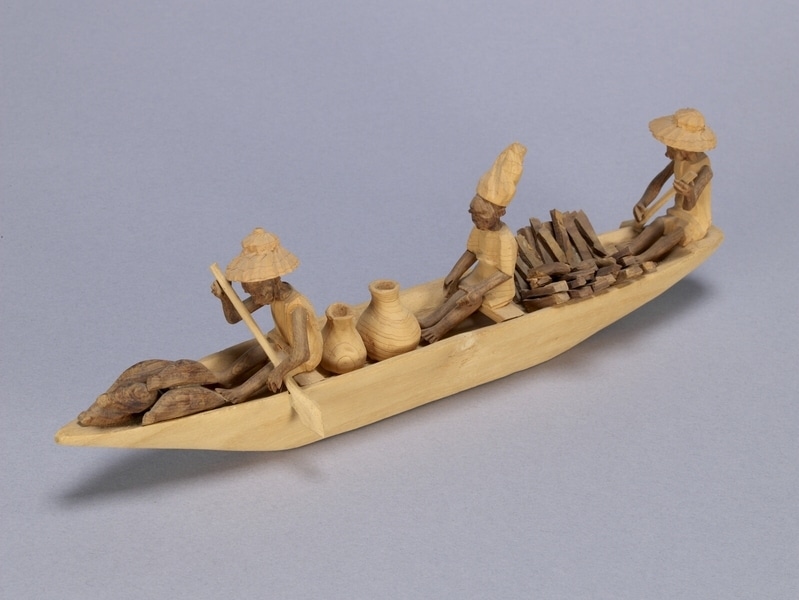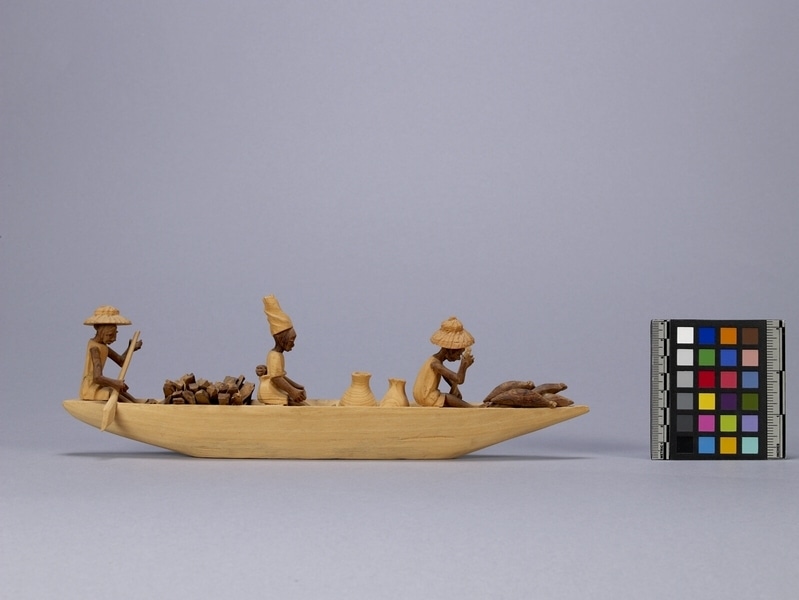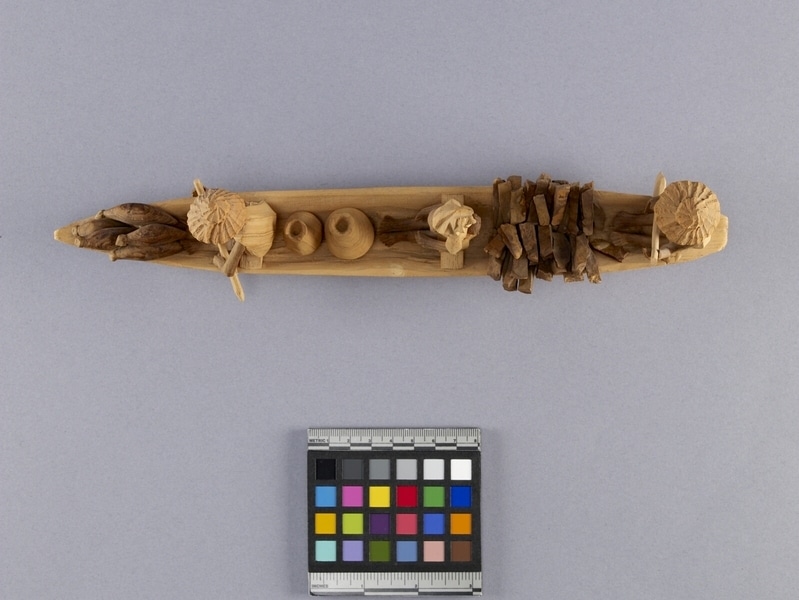Thorn Carving Item Number: Af361 from the MOA: University of British Columbia



Description
A small carving of a dug-out canoe containing three adult figures, one at either ends paddling while one is in the centre carrying a child on her back. Cargo consists of six vegetables in the bow, two pots between the first and the second figures and two piles of material that appear to be wood or stone between the second and the third figures. Paddlers are wearing sleeveless shirts over shorts and brimmed hats. Figure in the centre is wearing a short-sleeved dress and a tall spiral hat. Vegetables, wood/stone, and human figures are dark brown. Pots and clothing are light yellow-brown. Canoe and paddles are a very light yellow-brown.
History Of Use
Thorn carvings are miniatures depicting scenes from Nigerian life. This type of carving began circa 1930. Thorns vary in size. They can be as large as 12.7 cm. long and 9.6 cm. wide. They are comparatively soft and easily carved. The light yellow-brown thorn and the dark brown thorn come from the Ata tree; the light red-brown thorn comes from Egun trees. The parts are glued together with viscous paste made from rice cooked with water. They are carved by men.
Cultural Context
craft; tourist art
Item History
- Made in Nigeria before 1972
- Collected during 1972
- Owned by Andrew Stewart and Jessie Stewart before February 8, 1980
- Received from Andrew Stewart (Donor) and Jessie Stewart (Donor) on February 8, 1980
What
- Name
- Thorn Carving
- Identification Number
- Af361
- Type of Item
- carving
- Material
- atum thorn, rice adhesive, wood and egun thorn
- Manufacturing Technique
- carved and glued
- Overall
- height 9.8 cm, width 31.5 cm, depth 7.0 cm
Who
- Culture
- Yoruba
- Previous Owner
- Andrew Stewart and Jessie Stewart
- Received from
- Andrew Stewart (Donor) and Jessie Stewart (Donor)
Where
- Holding Institution
- MOA: University of British Columbia
- Made in
- Nigeria
When
- Creation Date
- before 1972
- Collection Date
- during 1972
- Ownership Date
- before February 8, 1980
- Acquisition Date
- on February 8, 1980
Other
- Item Classes
- carvings & sculpture
- Condition
- good
- Accession Number
- 0590/0047